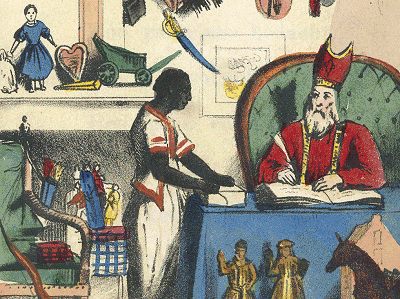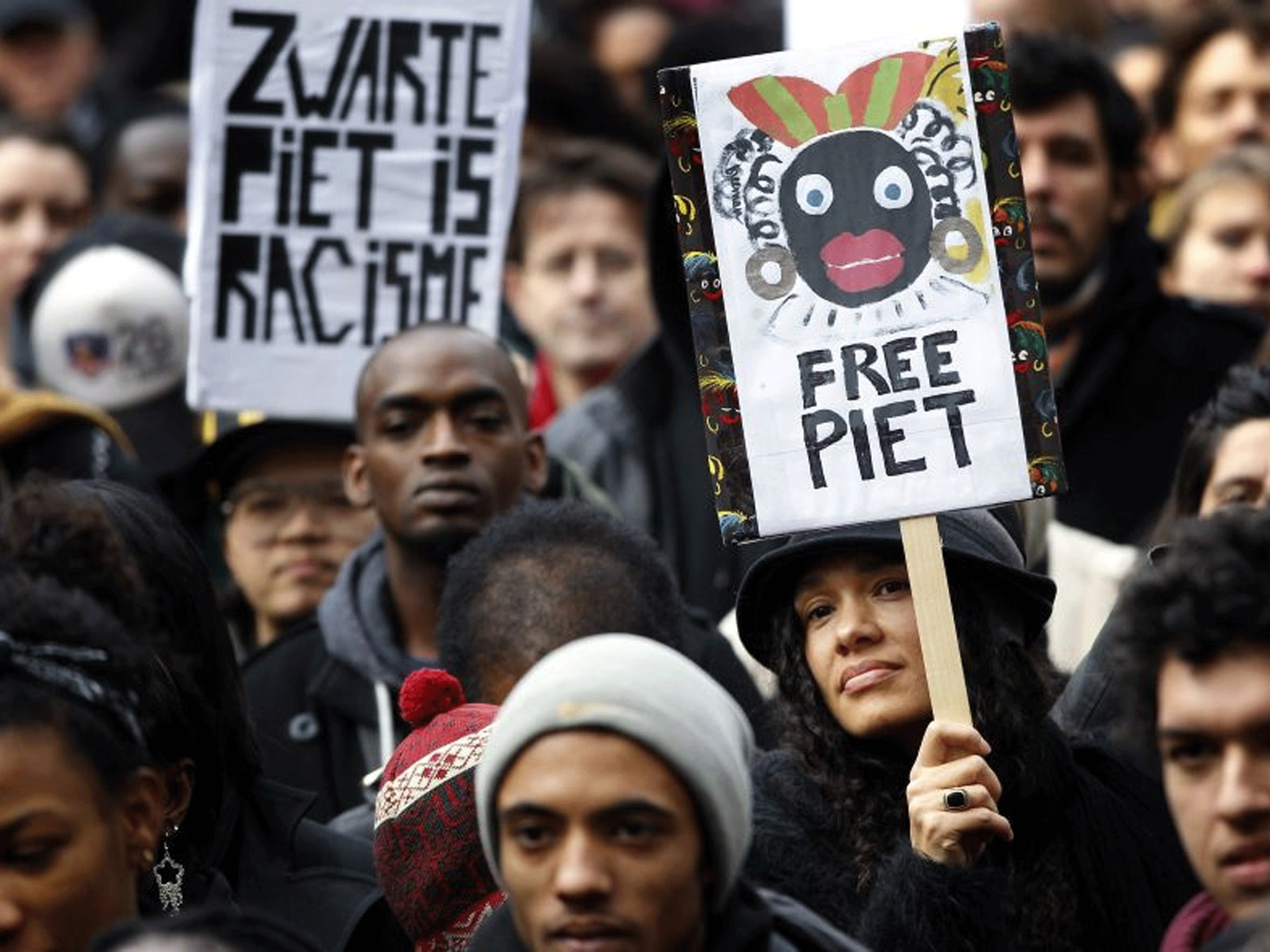Black Pete: Who is the ‘racist’ Christmas character sparking clashes in the Netherlands?
Assistant to Sinterklaas arrives in Dutch cities by steamboat every December to herald coming of festive season but increasingly considered an offensive relic of colonialism
A traditional Christmas character known as Zwarte Piet (“Black Pete”) is again causing controversy in the Netherlands as the festive season approaches.
Revellers who had blacked-up to play the spirit in parades across the cities of Rotterdam, Eindhoven and Groningen were met with angry condemnation by protesters over the weekend, accusing them of “racism”, and forcing the police to step in when eggs and beer cans were thrown by pro-Black Pete demonstrators, making several arrests.
Amsterdam district judge Antoon Schotman has meanwhile declined a request to have the character banned from state television, on the grounds the action had been brought too close to Christmas, but encouraged the debate to continue.
“I think society agrees on one thing: we grant children the magic of the Sinterklaas [Santa Claus] party,” prime minister Mark Rutte said of the controversy.
So who is Zwarte Piet, is he an unsalvageable racist caricature and could the tradition by reinvented to avoid future offence?
Black Pete’s origins are relatively recent as folk customs go, first introduced by Amsterdam school teacher Jan Schenkman in his children’s book Saint Nicholas and His Servant in 1850. Schenkman offers little by way of background to the character, however, and much of the mythology surrounding him has developed organically over the intervening decades.
Piet is an assistant to Sinterklaas and appears on 5 December every year, the eve of St Nicholas’s Day, as an ambassador announcing his employer’s arrival. He reaches the Netherlands by steamboat, having sailed from Spain where he and Sinterklaas reside for the remainder of the year.
His role was originally that of disciplinarian, taking bad children away in a burlap sack as punishment for being naughty while the good are rewarded with Christmas gifts, although his duties are now much more akin to those of a master of ceremonies.
Illustrations from Schenkman’s story depict Pete wearing the traditional dress of Spanish Moors, the Muslim people expelled from the devoutly Catholic country to North Africa in the early 17th century.
Schenkman is also thought to have taken inspiration from the 13th century medieval manuscript Legenda Aurea, compiling accounts of the lives of the saints, which suggests Saint Nicholas once freed a slave from the court of the Emperor of Babylon, who stayed with him thereafter as a devoted familiar.

It has also been suggested that Pete’s blackness is not a racial matter at all. He might be a white man, rendered black by soot after climbing down the chimneys to deliver presents at his master’s behest.
He might not even be human at all. In Central European folklore, Father Christmas is often said to have captured a demon and put him to work as an aide. The character of Krampus, a horned devil who punishes the naughty, is a loose Germanic equivalent of Black Pete, although far more malevolent than his Low Country counterpart.
But however innocent the founding intention – namely, to entertain children – it is not difficult to see why characterisations of Zwarte Piet are now considered so offensive and why many have called for an end to the tradition as a regrettable relic of colonialism, the Dutch once administering a vast trading empire spanning from the Caribbean to Indonesia.
In 2015, the UN Committee on the Elimination of Racial Discrimination called on the Netherlands to revamp a character it considered “a vestige of slavery”.

Often veering uncomfortably close to the racist caricature of golliwogs and Little Black Sambo, people dressing as Pete have commonly donned frizzy afro wigs and garish red lipstick in addition to blackface to accentuate the character’s “African” features.
Nor can it be ignored that the Dutch far-right has campaigned loudly in defence of Piet as a freedom of speech issue, with members of Pegida reportedly involved in the weekend’s clashes, according to De Telegraaf.
But the character has supporters across the political spectrum and many maintain he is harmless and has nothing to do with discrimination.
With the debate at an impasse, it is worth remembering that Shakespeare’s Othello is also a Moor and while he was once routinely played by white actors in blackface, including Sir Laurence Olivier and Orson Welles, doing so would be unthinkable today.
Othello is now almost exclusively played by non-white actors and applying the same rule to Black Pete might go some way to alleviating the problem through reinvention, without having to scrap a popular tradition entirely. On the other hand, it must be said Shakespeare’s general is a figure of tragic grandeur and not a fool to be laughed at.
Alternatively, having Piet played as a white man, more akin to the elves we know from British and American Christmas lore, would provide another solution. Doing away with blackface is surely crucial if the character is to survive at all.
Perhaps the case of Black Pete has most in common with that faced by the creators of The Simpsons, currently debating the future of Kwik-E-Mart proprietor Apu Nahasapeemapetilon, a beloved fixture on the show for 30 years but also undeniably a Hindu stereotype voiced by a white actor.

The answer to “the problem with Apu”, as posed in Hari Kondabolu’s documentary of that title, is not obvious. While many love the character and see no reason to make a change, others feel a long-standing wrong must be righted.
Finding the right balance between cultural heritage and social respect remains one of the most complex challenges of our time.
Join our commenting forum
Join thought-provoking conversations, follow other Independent readers and see their replies
Comments
Bookmark popover
Removed from bookmarks